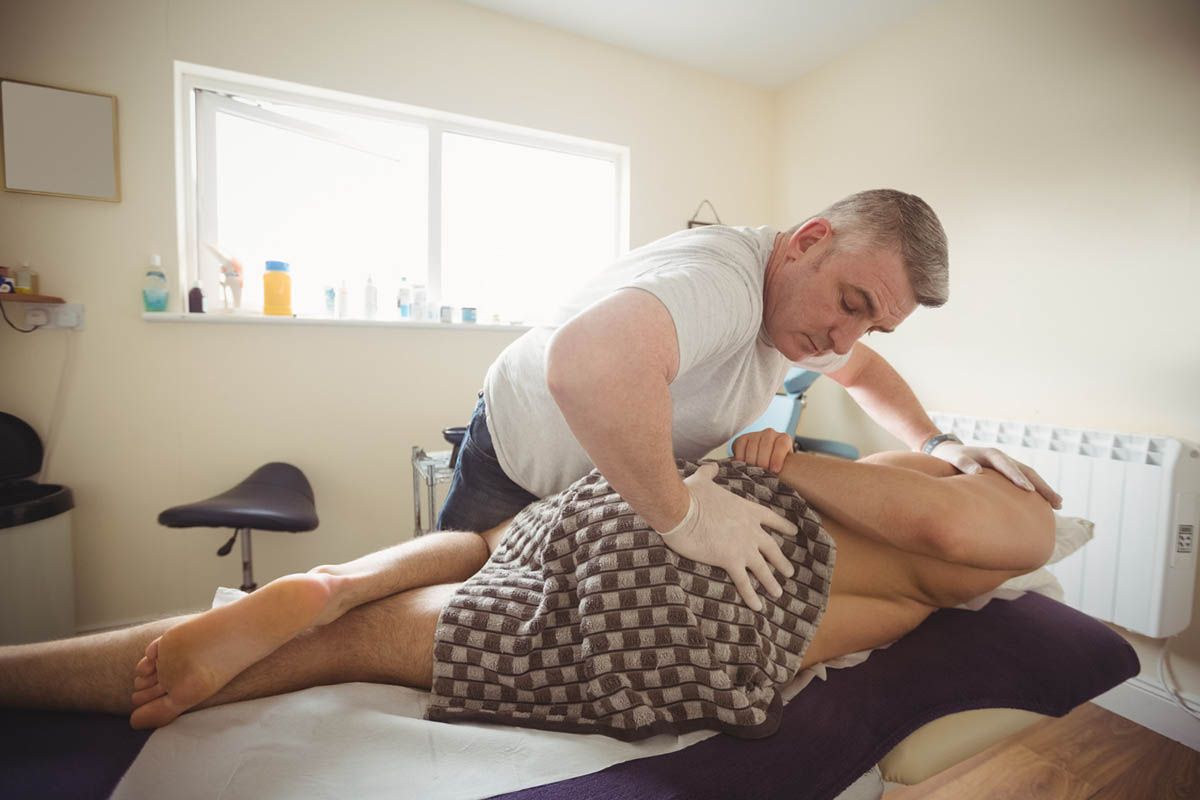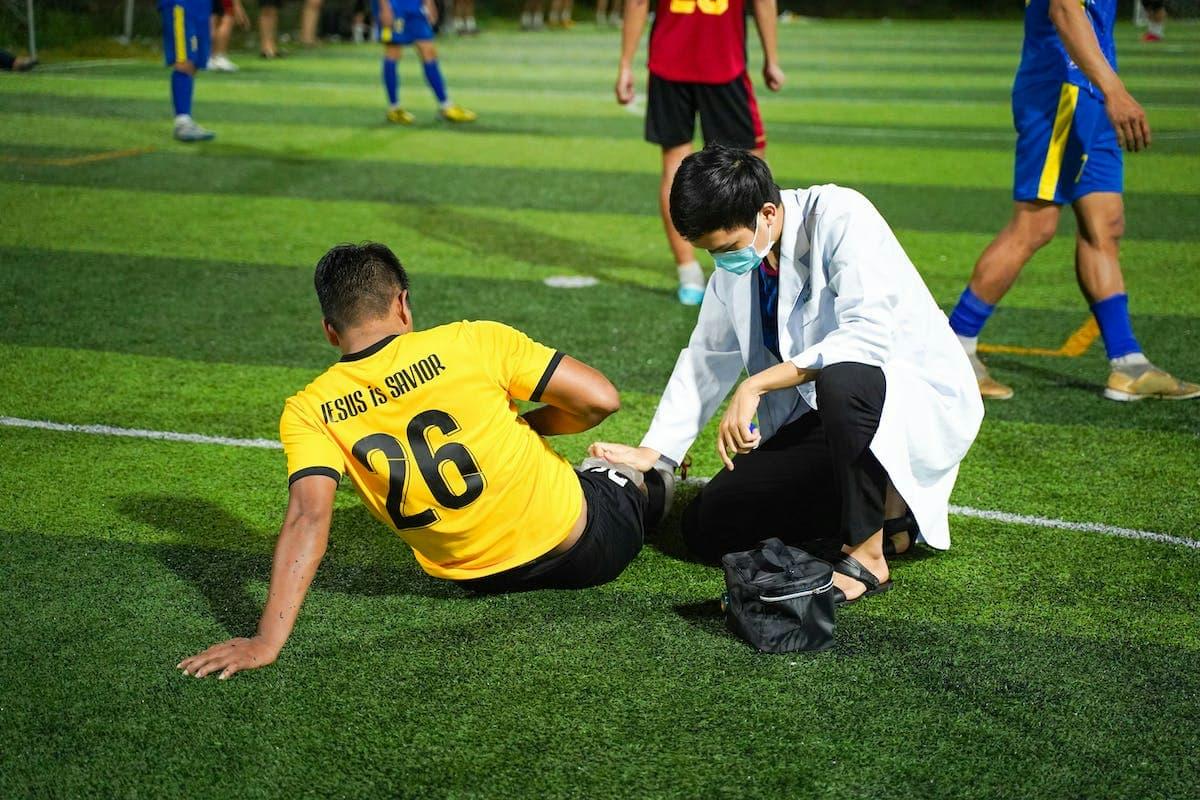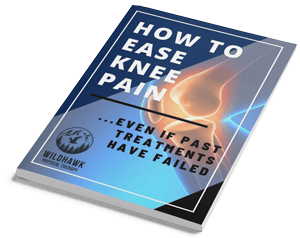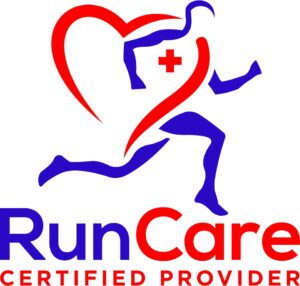
Manual physical therapy is a specialized approach that uses hands-on techniques to relieve pain, improve mobility, and promote healing in patients with a variety of physical conditions. It is often employed in treating both acute and chronic pain in back, neck, shoulders, and other musculoskeletal areas, making it an effective tool for many seeking relief from pain without invasive procedures. This guide explores manual orthopedic physical therapy, its techniques, benefits, and what to expect, helping you determine if it’s right for you.
What is Manual Physical Therapy?
Manual physical therapy, sometimes called manual orthopedic physical therapy, is a form of therapeutic intervention where a skilled therapist uses their hands to mobilize, manipulate, and apply targeted pressure to muscles, joints, and soft tissues. Unlike general physical therapy, manual therapy techniques are aimed at relieving musculoskeletal problems through a hands-on approach, addressing pain in back, neck, shoulders, and other critical areas. Through manual therapy, patients can experience a significant reduction in symptoms, often without the need for medication.
How Manual Therapy Works:
Manual therapy works by directly targeting muscles, joints, and the soft tissues involved in musculoskeletal problems. By assessing bones, muscles, joint mobility, and the blood and nerve supply to affected areas, therapists can develop a targeted treatment plan. Techniques like joint mobilization, myofascial release, and soft tissue mobilization enhance blood flow, reduce muscle spasms, and release tight fascia, allowing tissues to repair and model more effectively.
Key Differences Between Manual Therapy and Other Physical Therapy Approaches
While traditional physical therapy may focus on exercises and equipment, manual physical therapy emphasizes hands-on techniques to address the root causes of pain and limited mobility. It differs from chiropractic care, which often focuses on spinal adjustments alone; manual therapy also involves assessing joint hypermobility, muscle inhibition, and the overall musculoskeletal system to treat issues holistically. Another key difference is the integration of soft tissue work, selective tissue tension testing, and movement assessments, which allow therapists to address complex neuro-musculoskeletal conditions effectively.
The Benefits of Manual Physical Therapy
Manual physical therapy offers a variety of benefits, not only in pain relief but in improving overall body function. It provides a pain-free response to chronic pain conditions and aids in faster recovery, often enhancing the quality of life for those with long-standing musculoskeletal conditions.
Pain Relief and Inflammation Reduction
Manual therapy is highly effective for pain relief and reducing inflammation. Techniques like soft tissue manipulation, instrument-assisted soft tissue mobilization, and trigger point therapy work to reduce nociceptive activity, or pain signals, by employing the pain-gate mechanism. This helps relieve pain in back, neck, and joints, and is particularly beneficial for reducing symptomatic responses in acute and chronic back pain cases.
Improved Mobility and Functionality
By improving joint mobility and alleviating muscle inhibition, manual therapy helps patients restore a full range of motion. Techniques like joint mobilization, longitudinal caudad and cephalad movements, and rhythmic passive movements enable the body to regain flexibility and functionality. Patients often notice improved movement and reduced joint dysfunction, which contributes to an overall better quality of life and prevents future injuries.
Faster Recovery and Enhanced Healing Process
Manual therapy encourages faster recovery by promoting tissue repair and modeling through increased blood flow and reduction of muscle spasms. Techniques such as soft tissue mobilization and active release techniques help enhance tissue health and speed up recovery, even in cases involving musculoskeletal conditions like sacroiliac joint dysfunction. These methods reduce intra articular pressure and improve the function of affected areas.
Manual therapy plays a critical role in restoring functional abilities and can be most effective when included as part of a comprehensive, multimodal approach. Current studies suggest that integrating manual therapy with other treatments, such as targeted exercises and patient education, often leads to improved outcomes compared to using manual therapy alone. This combination encourages faster recovery, optimizes functional movement, and supports long-term improvements in physical health.
Long-term Benefits for Chronic Pain Management
For individuals with chronic pain, manual therapy offers long-term benefits, including sustained pain relief and improved functionality. By addressing chronic issues such as joint dysfunction, joint hypermobility, and spinal problems, manual therapy supports patients in managing conditions that might otherwise require ongoing medication. It is especially beneficial for conditions like arthritis, osteoporosis, and chronic spinal issues, offering relief without reliance on pharmaceuticals.
Common Conditions Treated by Manual Physical Therapy
Manual therapy is a versatile treatment approach for a wide range of musculoskeletal issues. Therapists use manual therapy for rehabilitation, targeting various conditions that cause pain, discomfort, and restricted movement.
Back Pain and Sciatica Relief
Manual therapy is commonly used to alleviate acute and chronic back pain and treat sciatica through mobilization and manipulation of the spine. Techniques like spinal adjustments and spinal alignment help reduce pressure on the sciatic nerve, providing lasting relief for those suffering from sciatica or other spinal problems. Therapists may also use myofascial release and joint mobilization to address structural issues contributing to back pain.
Treatment for Neck Pain and Shoulder Injuries
Manual therapy is effective for relieving neck pain and treating shoulder injuries by enhancing soft tissue health and reducing muscle tension. Techniques like transverse massage, thoracic spine mobilizations, and strain-counterstrain target areas where muscle spasms and tension restrict movement. By addressing the root cause of pain in the cervical and thoracic regions, manual therapy allows for effective, pain-free movement recovery.
Solutions for Joint Pain and Arthritis
Joint pain, particularly in those suffering from arthritis, can be effectively managed with manual orthopedic physical therapy. Techniques like intraarticular mobilization and post-isometric relaxation reduce joint stiffness and pain, improving the patient’s range of motion. These hands-on techniques help maintain joint health and functionality, especially for those affected by osteoarthritis and other degenerative joint conditions.
Addressing Sports Injuries and Overuse Conditions

Manual therapy is highly effective for sports injuries and overuse conditions, as it reduces muscle spasms and improves soft tissue health. Active release techniques and soft tissue manipulation help reduce scar tissue buildup, improving flexibility and aiding in recovery. This treatment not only speeds up rehabilitation for athletes but also aids in preventing re-injury by restoring functional movement and strength.
Chronic Conditions That Benefit from Manual Therapy
Chronic conditions like fibromyalgia and functional movement disorders benefit greatly from manual therapy due to its holistic approach. By employing a biopsychosocial framework, manual therapy addresses both the physical and emotional aspects of chronic pain, providing long-term relief. Patients experience improved quality of life, reduced reliance on medication, and enhanced movement and function.
Manual Physical Therapy Techniques Explained
Manual therapy incorporates a variety of techniques to address different aspects of pain and dysfunction within the musculoskeletal system. These methods are tailored to each patient’s needs and can address everything from joint mobility to muscle relaxation and soft tissue health.
Soft Tissue Mobilization and Myofascial Release
Soft tissue mobilization focuses on releasing tight muscles and fascia to improve blood flow and movement. Techniques such as myofascial release and instrument-assisted soft tissue mobilization address adhesions and tightness, reducing symptoms of pain and stiffness. This approach is ideal for conditions involving soft tissue restrictions, such as shoulder injuries or chronic pain in back muscles.
Joint Mobilization and Manipulation Techniques
Joint mobilization and manipulation involve targeted movements to restore joint mobility, alleviate stiffness, and improve the function of affected joints. These techniques include mobilising in specific directions to improve joint function and relieve symptoms. Joint manipulation can reduce joint pain and improve the symptomatic response in patients with restricted joint movement.
Muscle Energy Techniques (MET) for Strength and Flexibility
Muscle energy techniques (MET) use the patient’s muscle contractions against controlled resistance to enhance strength and flexibility. METs are effective in treating musculoskeletal conditions, as they help realign joints, reduce muscle inhibition, and alleviate pain caused by joint dysfunction. This technique is especially beneficial for those recovering from injuries and aiming to restore full functional movement.
Strain-Counterstrain Technique for Targeted Pain Relief
Strain-counterstrain is a gentle positioning technique that reduces stress and tension in specific muscle groups. This approach offers a pain-free response, ideal for acute pain or tender areas that require a gentle touch. Strain-counterstrain works by manipulating the body into positions that ease muscle tension, providing relief for painful conditions like muscle strains or joint dysfunction.
Trigger Point Therapy and Pain Reduction
Trigger point therapy involves applying pressure to sensitive points in muscles to release tension and alleviate pain. This technique is highly effective for reducing localized pain and tension caused by trigger points. It is particularly beneficial for those experiencing muscle spasms, chronic pain, and tension headaches.
Manual Therapy vs. Other Treatment Options
Manual therapy offers unique benefits compared to other forms of treatment, such as chiropractic care or massage therapy. Understanding the differences helps patients choose the best therapeutic services for their needs.
Manual Therapy vs. Chiropractic Adjustments
Manual therapy and chiropractic care both address musculoskeletal issues, but they do so differently. While chiropractic care focuses on spinal adjustments to address spinal alignment, manual therapy also targets soft tissues, muscles, and joints throughout the body. This approach is often more comprehensive, addressing a wider range of physical conditions, from joint dysfunction to soft tissue restrictions.
Manual Therapy vs. Massage Therapy
Though similar in that both therapies involve hands-on techniques, manual therapy has a more clinical focus on diagnosing and treating pain and dysfunction. Massage therapy is designed primarily for relaxation and improving circulation, while manual therapy aims at restoring function and addressing pain by using techniques such as selective tissue tension testing and soft tissue manipulation.
Combining Manual Therapy with Exercise for Optimal Results
Combining manual therapy with prescribed exercises maximizes recovery, particularly for those with chronic pain or injury-related limitations. Therapists often incorporate exercise progression to improve strength and flexibility, leading to better long-term results. This dual approach encourages functional movement and helps patients maintain the benefits of manual therapy between sessions.
Studies show that combining manual therapy with exercise yields significantly better outcomes than exercise alone. In one study, success rates after five weeks were 81% in the manual therapy group, compared to 50% in the exercise-only group (odds ratio 1.92, 95% confidence interval 1.30, 2.60). Patients receiving manual therapy experienced greater relief in pain and stiffness, as well as improved joint function and range of motion, highlighting the importance of a combined approach for optimal recovery.
How to Determine if Manual Physical Therapy is Right for You
For those dealing with chronic pain, restricted movement, or post-injury recovery, manual therapy may be a valuable option. This section covers how an initial assessment helps determine the best approach and customize a plan for your specific needs.
Initial Consultation and Evaluation Process
During an initial consultation, the therapist performs a comprehensive movement assessment, evaluating bones, muscles, and the musculoskeletal system. They assess joint mobility, muscle tension, and the blood and nerve supply to the affected areas, which helps in creating a personalized treatment plan. This initial evaluation is crucial for identifying which manual therapy techniques will best address your needs.
Customizing Treatment Plans to Meet Individual Needs
Manual therapists develop a customized treatment plan based on your specific symptoms and goals. By understanding the unique factors of each case, including the assessment of bones, muscles, and soft tissue health, therapists tailor their approach to each individual. This ensures that each patient receives targeted, effective care that directly addresses their issues.
Common Indicators Manual Therapy May Benefit You
If you have pain that interferes with daily life, experience limited mobility, or have not responded to traditional therapies, manual therapy may help. Indicators include conditions like chronic joint pain, acute and chronic back pain, sacroiliac joint dysfunction, or neuro-musculoskeletal conditions. A manual therapist can determine if their techniques will provide the relief you need.
What to Expect During a Manual Therapy Session

Understanding what happens during a session can ease any concerns and help you prepare for your treatment. Sessions are structured to address individual needs, using specific techniques to relieve pain and improve functionality.
Typical Session Structure and Duration
A manual therapy session generally lasts 30 to 60 minutes, with a focus on specific areas of pain or limited movement. The therapist uses hands-on techniques such as joint mobilization, myofascial release, or soft tissue manipulation to relieve tension and improve movement. Sessions are adjusted based on progress, and therapists may increase or decrease intensity to match each patient’s comfort level.
Hands-on Techniques Used by Therapists
Manual therapists use various hands-on techniques, such as joint manipulation, muscle energy techniques, and neuromobilization. These methods are carefully chosen to address pain points, increase joint mobility, and improve the overall function of the musculoskeletal system. The therapist’s approach may vary each session depending on the patient’s symptomatic response.
Pain Management Strategies and Comfort Level
Therapists work within each patient’s pain-free range to ensure comfort and maximize results. Pain management strategies may include gentle mobilising techniques or rhythmic passive movements to help patients relax. By encouraging open communication, therapists can ensure sessions remain effective and comfortable for the patient.
Finding the Right Manual Physical Therapist for Your Needs
Selecting the right manual physical therapist is essential to achieving the best possible results in your treatment and recovery journey. Knowing how should you choose a physical therapist for manual therapy can make all the difference, as a skilled therapist not only has expertise in various manual therapy techniques but also understands how to tailor treatments to address your unique needs and goals. By taking the time to find a qualified therapist, you can ensure a safe, effective, and personalized approach to managing pain and improving mobility.
At Wildhawk Physical Therapy, we specialize in a personalized approach to manual physical therapy that empowers patients to achieve long-lasting pain relief and enhanced mobility. Our team is committed to providing comprehensive, hands-on care tailored to each individual’s unique needs, combining targeted manual therapy techniques with therapeutic exercises and patient education for optimal recovery. Whether you’re dealing with chronic pain, recovering from an injury, or seeking improved movement, Wildhawk Physical Therapy delivers exceptional results by focusing on restoring function and promoting overall physical health.
Qualifications and Expertise to Look for in a Therapist
When selecting a therapist, look for credentials in manual orthopedic physical therapy and experience treating conditions similar to yours. The right therapist should have training in techniques like myofascial release, joint manipulation, and neuromobilization. Check their qualifications and specializations to ensure they can effectively address your unique needs.
Questions to Ask During Initial Consultations
Asking the right questions during initial consultations can help you find a suitable therapist. Consider inquiring about their experience with conditions similar to yours, the types of manual therapy techniques they use, and how they approach treatment plans. This helps ensure that the therapist can provide the level of care you’re seeking.
Evaluating the Right Clinic for Your Therapy Needs
The right clinic should offer a comfortable environment, licensed professionals, and a range of therapeutic services. Look for positive reviews, modern facilities, and therapists who specialize in manual orthopedic physical therapy. A good clinic will prioritize your needs and work towards a comprehensive recovery plan.
Conclusion
Manual physical therapy is a powerful, hands-on approach that effectively addresses pain, improves mobility, and enhances functional recovery. By focusing on targeted techniques like soft tissue mobilization, joint manipulation, and muscle energy techniques, manual therapy provides a comprehensive solution to both acute and chronic musculoskeletal issues. For those dealing with conditions like back pain, joint dysfunction, or sports injuries, manual therapy can offer lasting relief and help restore quality of life. As part of a multimodal approach that includes exercise and education, manual therapy continues to demonstrate significant benefits, allowing patients to experience improved movement, reduced pain, and a quicker, more sustainable recovery.
FAQs
Is Manual Therapy the Same as Massage?
Manual therapy is more clinical and focuses on addressing pain, movement restrictions, and musculoskeletal issues, whereas massage therapy primarily focuses on relaxation and circulation. While both can be beneficial, manual therapy provides a more comprehensive approach to treating pain and dysfunction in the musculoskeletal system.
How Many Sessions Will I Need?
The number of sessions varies based on the condition’s severity and individual progress. Acute issues may resolve within a few sessions, while chronic conditions like sacroiliac joint dysfunction or osteoporosis may require ongoing treatment. Your therapist will assess progress over time and adjust your plan as needed.
Can Manual Therapy Work Alongside Other Treatments?
Yes, manual therapy can complement other treatments, including prescribed exercises, chiropractic care, and therapeutic services. Combining therapies often enhances overall results, providing a comprehensive approach to pain relief and recovery.










